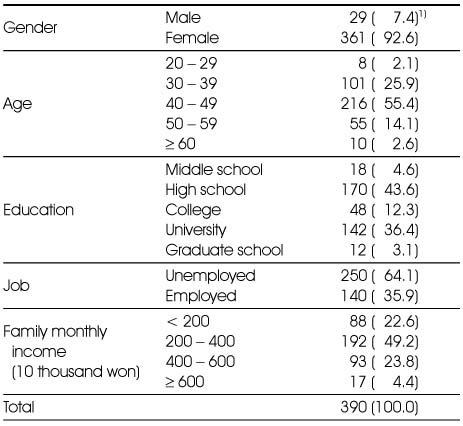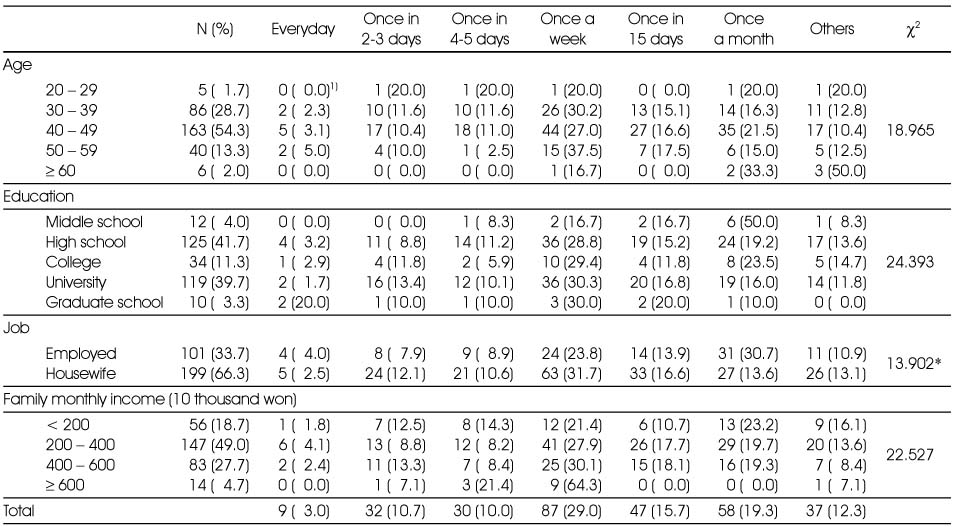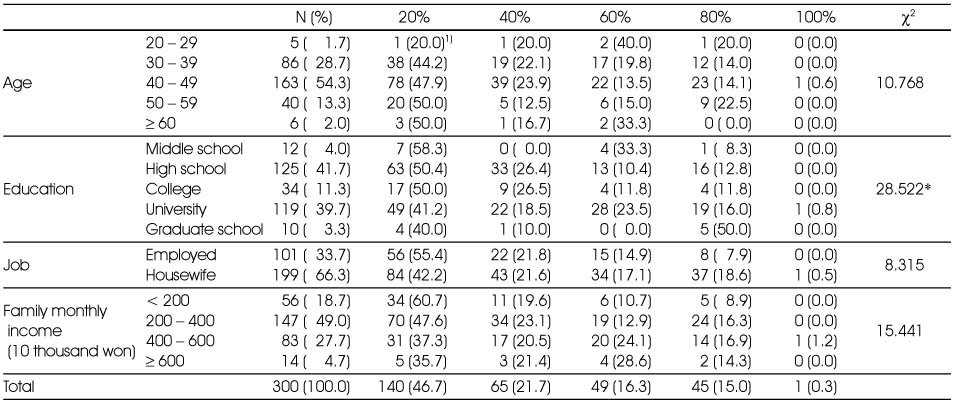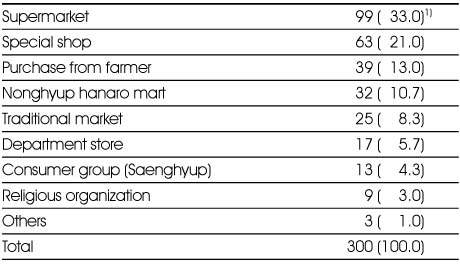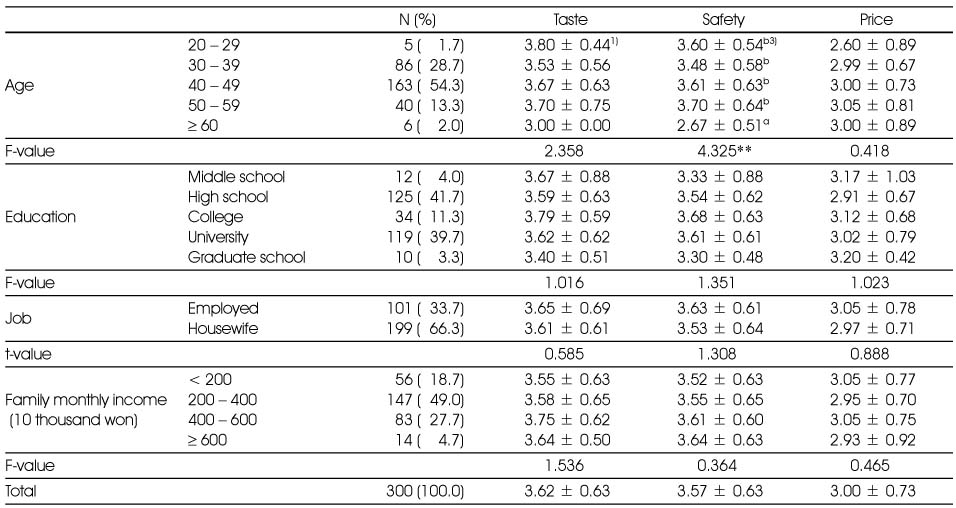References
1. An JH, Kang KO. Consumption type of housewives about organic and instant food. Korean J Food Nutr 2006. 19(1)28–37.
2. Choi HS, Chang GJ. The utilization of environment-friendly agricultural products of college students in Seoul and Incheon areas. Korean J Community Nutr 2007. 12(6)742–751.
3. Jang JK. A study on marketing promotion of environmentally friendly agricultural product 2006. Graduate School of Agricultural Economics, Chonnam National University; 1–62.
MS thesis.
4. Jeong EM. The development and characteristics of the environment-friendly agricultural policy in Korea. Korean J Org Agric 2006. 14(2)117–137.
5. Kim CK, Jung HK, Moon DH. Recent production status and market prospect of environmentally friendly agricultural products in domestic and foreign countries. Report on Agricultural Research 2009. Seoul: Korea Rural Economic Institute; 58.
6. Kim CK, Lee YS, Lee SG. Consumer's attitudes and marketing strategies for environmentally friendly agricultural products. Policy Analysis 2008a. Seoul: Korea Rural Economic Institute; 98.
7. Kim IH. The effect of health concern on purchase behavior of the environmental friendly agricultural products 2010a. Graduate School of Public Administration, Hanseo University; 16–17.
MS thesis.
8. Kim JW. The effect of consumer knowledge and attitude about environment-friendly agricultural products on the purchasing behavior for those products 2010b. Graduate School of Education, Ulsan University; 28–29.
MS thesis.
9. Kim JY. A study on the distribution structure of organic farming products for environmentally sustainable agriculture 2001. Graduate School of Urban and Regional Planning. Dankook University; 1–81.
MS thesis.
10. Kim KD, Lee JY, Namkung S. Purchase behavior of environment-friendly agricultural products by housewives in Seoul area. J Korean Soc Food Sci Nutr 2008b. 37(12)1667–1673.
11. Kim NR, Cho YS, Kim SA. Satisfaction and recognition level of environment-friendly agricultural products in Cheongju area. Korean J Community Nutr 2011. 16(1)75–85.
12. Kim SH. A study on the marketing promotion of environmentally friendly agricultural products 2009. Graduate School of Management, Mokpo National University; 1–73.
MS thesis.
13. Kim SO, Kim MH, Shim JH. Understanding of consumers' perceptions on environment-friendly agricultural products (EAP) and purchasing behavior by comparing purchasers and nonpurchasers. Korean J Org Agric 2008c. 16(1)21–42.
14. Kim YS. A study on the utilization present status and the satisfaction with environment-friendly agricultural products 2005. Graduate School of Traditional Culture and Arts, Sookmyung Women's University; 47–88.
MS thesis.
15. Kim YT. A study on the efficient plan of improving environmental-friendly agriculture 2006. Graduate School of Industry Kwangju University; 1–90.
MS thesis.
16. Ko BS, Ko PS. The study on the characteristics of circulation of environmentally friendly agricultural products and the consumer's purchase intention. Korean J Culinary Res 2005. 11(4)214–227.
17. Lee HW, Yun JH. Studies on change of organic farming in Korea from 1907~2007. Korean J Org Agric 2007. 15(4)399–411.
18. Lee JS. An analysis of production on environmental friendly agriculture in Korea. Korean J Org Agric 2002. 1029–50.
19. Lee JY. Analysis of consumer's behavior on the environment-friendly agricultural products 2006. Graduate School of Agricultural Economics, Chungnam National University; 26–68.
MS thesis.
22. Park JY. A study on use status of and satisfaction with environmental-friendly agricultural products by female consumers in Jeju area 2007. Graduate School of Education, Jeju National University; 37. MS thesis.
23. Park YE. An analysis on consumption behavior of environment-friendly agricultural products 2002. Graduate School at Dong-A University; 32–34.
MS thesis.
24. Shin CN. A survey on consumption pattern of environment-friendly agricultural products -with special reference to consumer in Changwon, Jinju and Sacheon area 2006. Graduate School of Human Ecology and Environment, Kyungsang National University; 50–52.
MS thesis.
25. Yang GS. Distribution conditions and marketing strategies for environmentally friendly agricultural products. The Journal of Korean Island 2009. 21(1)153–170.
